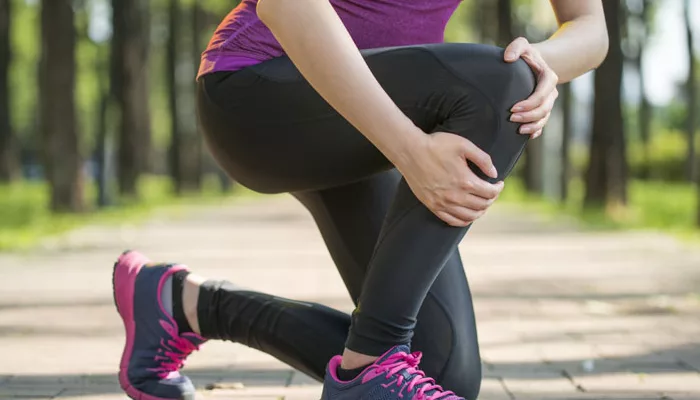Sports Injuries: Repair without cuts
November 21, 2017
Non-invasive Therapies Overview:
Non-invasive therapies are emerging as viable options for sports injuries and musculoskeletal diseases. Read on to know more.
Prerna Mohapatra, a 25-year-old semi-professional basketball player, sprained her ankle during a game. "As most players do, I wore a sprain bandage to protect my ankle and continued to play”, she recalls. "That was a bad idea because the pain worsened and when I went to get it examined, I was told I had a ligament tear. I went for physiotherapy, but it did not really help me much."
Mohapatra was offered surgical options, but she was reluctant. It was after all her leg. Confused about what to do, she was looking for a solution when she heard about a non-surgical regenerative therapy that is performed at very few centres in the country for her condition.
She consulted iRevive IEM-MBST, Bengaluru, and was advised seven hour long sittings on consecutive days, of a treatment called Magnetic Resonance Treatment (MRT). Also known as MBST, the treatment, invented by German company MedTec, entails the use of a pre-programmed chip that is placed into a specially designed machine. This chip has the necessary settings at which the radiation is to be administered. This innovative technology can regenerate bone cells, tendons, ligaments and muscle cells. An MRI scan at the clinic three months after the treatment showed 95 per cent improvement in her ligament tear. "I was also able to recover complete movement in my ankle and I am back to playing basketball again," says Mohapatra.
"The principle behind the treatment," explains Dr Gautam Kodikal, consultant Orthopaedic surgeon at Apollo Spectra Hospitals, "is that magnetic resonance stimulates the nucleus of the cells by releasing energy absorbed from the magnetic waves. This, in turn, initiates regeneration of the cells." The technology works at the cellular level, transferring energy directly into the cells of the tissue being treated, to stimulate regeneration. In this manner, it treats the cause of pain at the cellular level itself.
This non-invasive regenerative therapy is not limited to the treatment of ligament tears. It is, in fact, being used extensively on patients with osteoarthritis, osteoporosis, sports injuries and other metabolic disorders of the musculoskeletal system.
Understanding the Therapy
Apart from MRT, there are a few other non-invasive regenerative therapies such as laser therapy and ultrasound therapy, which are currently being used to treat patients with musculoskeletal problems, thus reducing the need for surgery.
"It was earlier thought that a terminally differentiated cell (a cell sufficiently committed to a particular function that it can no longer divide) cannot regenerate and we get a disease because the genetic structure of the cell gets altered and it is not able to multiply as a normal cell."
Says Wing Commander (Dr) V.G. Vasishta (Retd), founder and CEO, SBF Healthcare Research Centre Pvt Ltd. "Electromagnetic resonance targeted at the specific cell causes the cell to alter its genetic structure and start multiplying again, allowing for regeneration of cartilage, in the case of osteoarthritis."
The incidence of musculoskeletal or Orthopaedic conditions is steadily increasing, even among the young, which is a cause for alarm, believes Dr. Pradeep Mahajan, regenerative medicine researcher, StemRx Bioscience Solutions Private Limited. “Advances in science and technology are now gradually replacing conventional pharmacological and surgical treatments for Orthopaedic and autoimmune musculoskeletal conditions such as osteoarthritis, rheumatoid arthritis, avascular necrosis, etc. The use of laser-based technology is one such book that can be used to regenerate cartilage, tendon, bone and various other tissues.
Low-Level Laser Therapy (LLLT) has been shown to have anti-inflammatory effects and thereby aids in pain reduction, commonly associated with arthritic conditions. Additionally, LLLT can induce stem cell activity by increasing migration, proliferation, and differentiation in progenitor cells. These cells have the capability of differentiating into various types of cells, which then go on to form various tissues such as muscle, bone, cartilage, tendon, etc.
A combination of laser, stem cells and growth factor therapy can thus revitalize or replace worn-out and damaged joint tissues."
Elaborating on other similar forms of regenerative therapy, Mahajan says that ultrasound therapy based on shock wave therapy is also being used (especially for hard and soft tissue sports injuries). This form of treatment involves the application of very intense pressure pulse in affected areas, which aid in pain relief and tissue healing. The therapy also helps in cell proliferation and tissue regeneration.
Related Post: 5 most common sports injuries
NOTICE BOARD
CONTACT US
CONTACT US
 Book Appointment
Book Appointment


.svg)
.svg)
.svg)
.svg)








